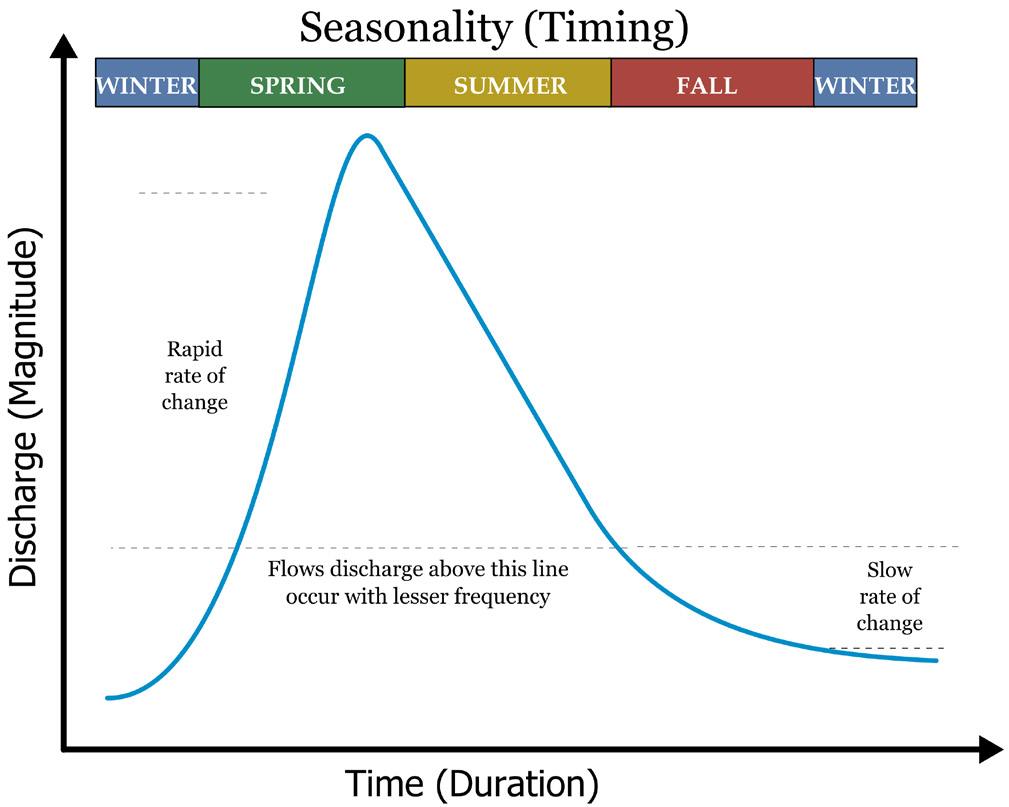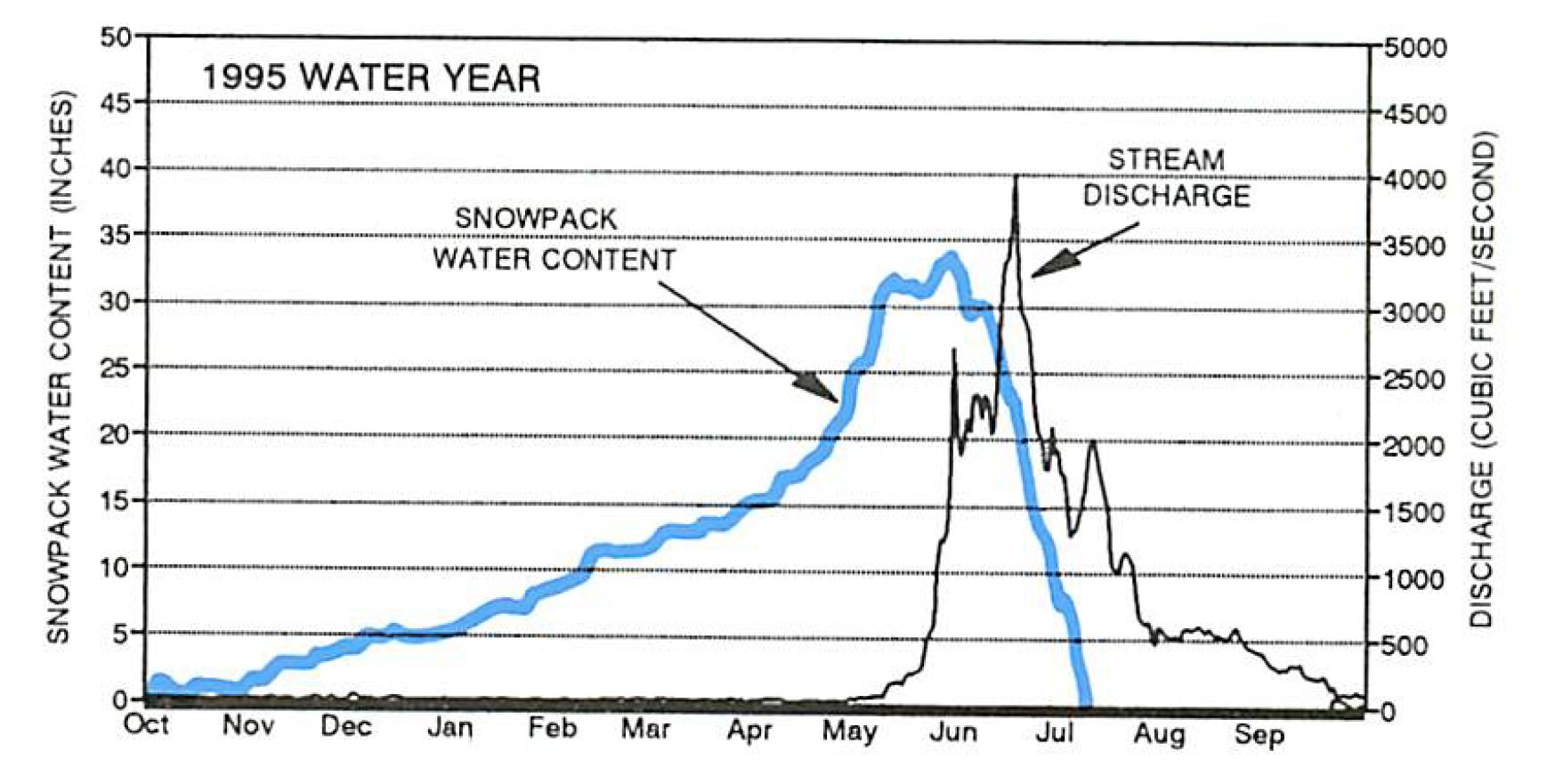Ecological Health & Function

CATEGORY: Flow Regime

Hydrograph Indicator
The hydrograph indicator considers the following components of the Yampa River’s flow regime:
Magnitude, timing, and duration of peak flows
Adequate peak flows are essential to river health and function. Snowmelt-driven peak flows during spring runoff are important for numerous watershed services, such as fishery support, riparian habitat quality, sediment flushing, water quality maintenance, recreation, aesthetics, and groundwater connection and recharge.
Magnitude, timing, and duration of base flows
Total annual volume (the amount of water delivered to the riverscape from its contributing watershed) and hydrograph form (the shape of the hydrograph, including timing and duration of rising and falling limbs) are also important components of flow regime in the Yampa River Basin but are not included in the scoring for this indicator due to lack of available modeled data.
Hydrograph score by Riverscape

Did You Know?
The flow data used for the Scorecard includes data modeled from streamflow gauges whose periods of record are approximately 40 to 60 years old. It also considers a streamflow trend analysis on the main stem of the Yampa River conducted by USGS over a 100-year time period.
Hydrograph examples are provided below. Example A shows the basic shape of a snowmelt-driven hydrograph, including seasonality of high and low flows. Example B shows the relationship between a typical hydrograph in a snowmelt-driven system and the snowpack itself.
Example A

Credit: CWCB (Colorado Water Plan 2015)
Example B

Credit: Doesken and Judson 1996
